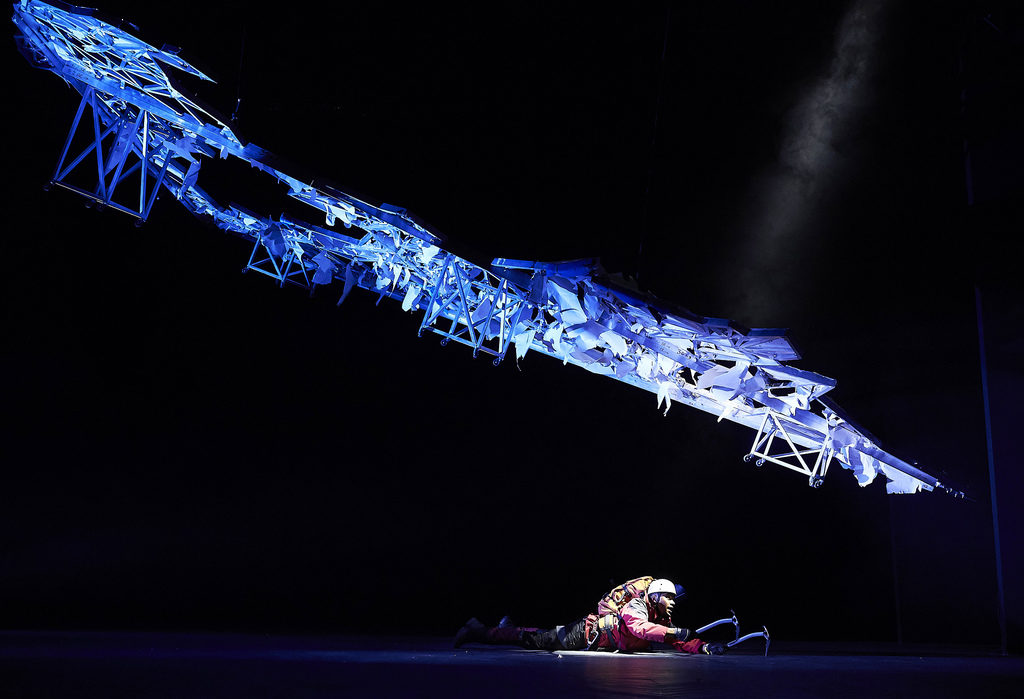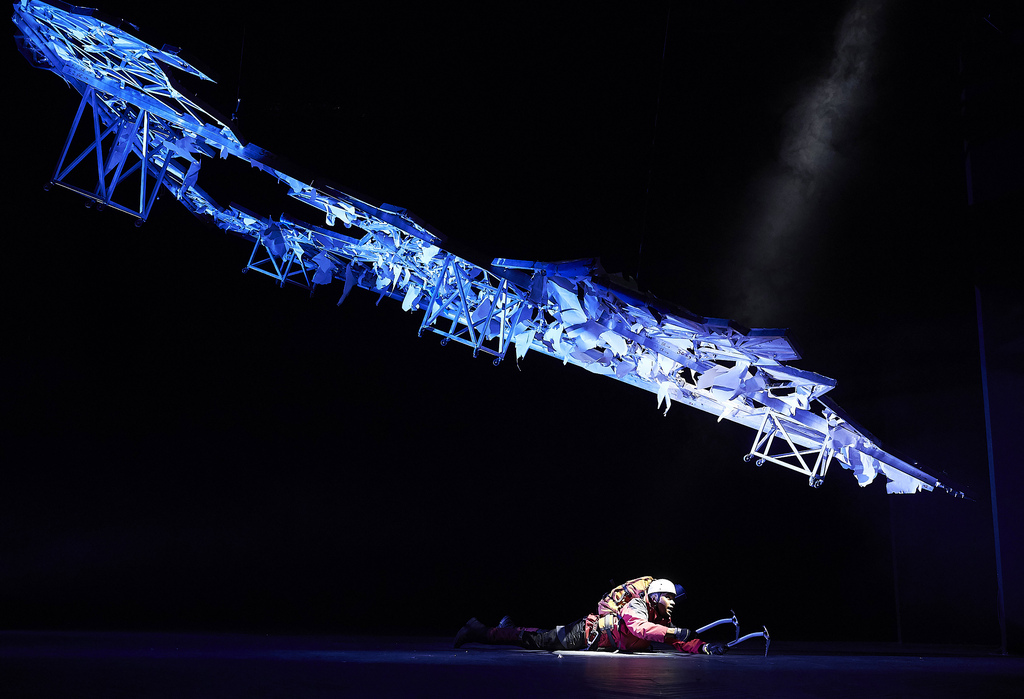
Touching the Void
I can recall many theatre performances. But I can only once recall seeing anything quite as accomplished, astonishing and as well crafted as Touching the Void.*
Story. Dialogue. Characters. Lighting. Sound. Set. Props. Movement. Music. All fused together to provide a jaw dropping spectacle that was an immersive and complete work of art. I was almost slack jawed as the brilliance of each element unfolded in front of me. This is astonishing, thrilling and superbly crafted theatre that will take your breath away, with sublime staging and writing.
If you only see one piece of theatre in your life, make it this. It is quite incredible and utterly captivating. Get the best seats you can and bring your friends.
If you're ever wondered why people climb mountains this will not just tell you why, but show you too. Two friends, Joe Simpson and Simon Yates, decide to take on the previously unclimbed West Face of Siula Grande, a formidable peak in the Peruvian Andes, and agree that the alpine way of climbing is the approach they will take - minimal equipment and supplies with no support and even neglecting to take tents and instead relying on digging snow caves for shelter.
Of course things go wrong. Badly wrong. But in the end human strength and endurance pulls them through.
The story is told in a fantastic way. It's not linear, with flashbacks and visual, aural and movement based micro-moments taking us from a wake to a desolate windswept mountain and back with astonishing speed and fluidity. One moment we are in the pub, and then with the grip of a whisky glass we are transported onto an icy cliff face, and actors are climbing tables and gripping chairs to ascend the side of the theatre triumphantly - and then we are literally back down to earth.
The combination of Ti Green’s stunning design, Chris Davey’s precise lighting with its rapid changes and switches, and Jon Nicholls' immersive music and sound effects puts you onto an icy cliff face, or at least, sitting on the edge of your seat at every moment. Credit too to movement director Sahsa Milavic Davies for the extraordinary physicality of the choreography of these figures pitting themselves against a mountain. Even ordinary objects such as chairs and tables are transformed into phantasm figures and rock faces, and the first appearance of Siula Grande is mesmerising.
What could pass for an alien artefact in a science fiction movie floats and rotates slowly in space with no apparent support, and is transformed before our eyes into a mountain side or a ridge edge or abyss edge and the actors scrabble across and over and around it with an intense physicality, lit with precision and drama and abstracted completely from the limits of the theatre and gravity.
Rather than just being a tale about climbing a mountain, the power of the story comes from the beautifully illustrated themes of loneliness, the loyalty and camaraderie of climbers, and the simple power of the human spirit to survive against everything that is thrown at it. And the way in which this is shown on stage shows all of this work's collaborators and players using all of their skills and expertise to jaw-slackening effect.
Fiona Hampton engages us from the start as Sarah, with her hurt and anguish barely below the surface at the mock 'wake' for Joe. Josh Williams is superb as the jocular, laddish Joe, and the exposition of his friendship with Simon, played with an appropriate quietly understatement by Edward Hayter is convincing and natural. The role of Richard, the geeky, nerdy narrator is deftly carried out by Patrick McNamee, and the passion and excitement he feels for climbing shines through in his boyishly enthusiastic northern tones. All of the actors play their roles with fluency and credibility, earning themselves rapturous applause at the climax, and it's a credit to director Tom Morris that there is such understated mastery in their approach.
The soundtrack, drawn from Simpson's own Desert Island Discs selection, along with the character of Sarah, Joe's sister, add a layer of nostalgia and childhood memory, as it is her voice, and her feisty, mocking character, that helps to guide him back to base camp safely. The writing is tight, at times dark, at others deeply humorous, and the combination of sound, lighting and stage set to add texture to the story works seamlessly throughout.
This is a triumph in every way. Clear your diary, grab your ice-pick, and book your seat.
5 stars ★★★★★
*The only other piece of theatre that astonished me quite so deeply was Sarajevo's Tattoo Theatre with their Fringe First winning Moonplay, first performed at the Edinburgh Festival in 1989.
24 January - 16 February 2019
PREVIEWS, 7:30pm
Thursday 24 January, 7.30pm
£10 (Preview tickets on sale from 17 December)
EVENINGS, 7:30pm
Tuesday - Saturdays
MATINEES, 2pm
Wednesdays and Saturdays
Running time: 2 hours and 20 minutes, including one 20 minute interval.


